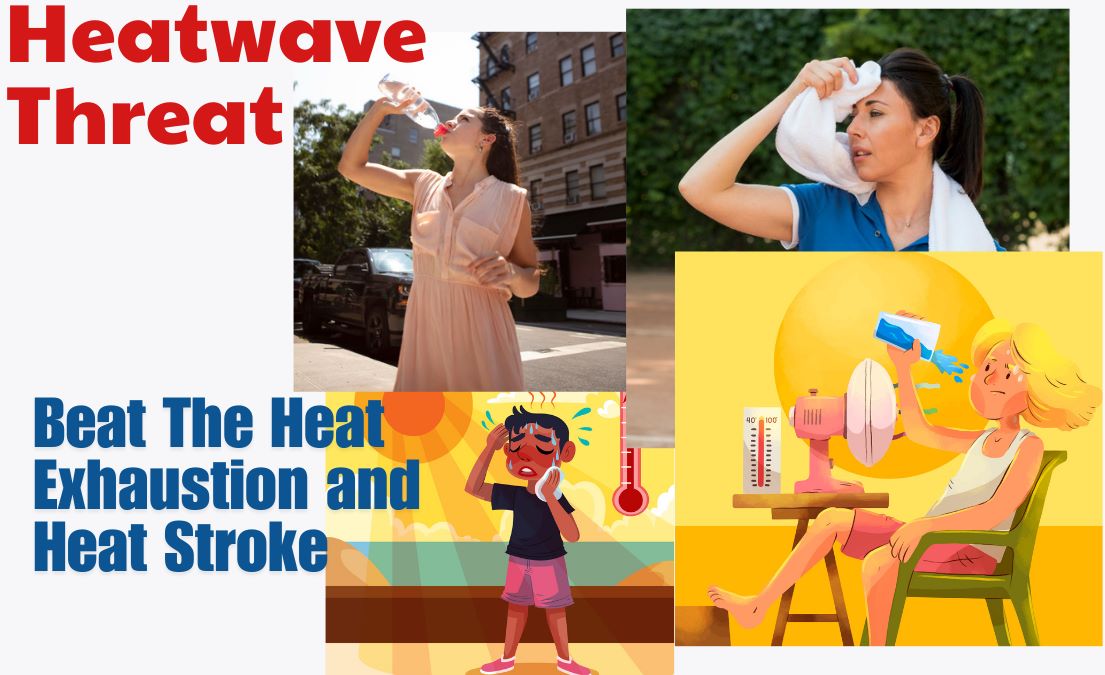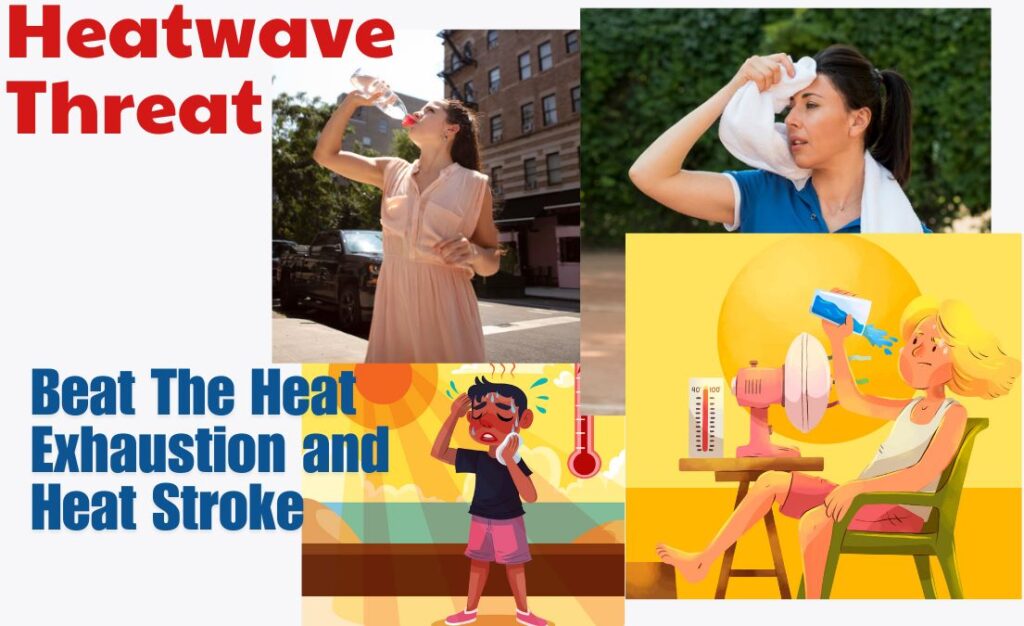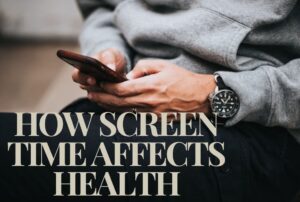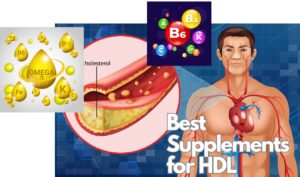
Image by Freepik

Know the Difference Between Heat Exhaustion and Heat Stroke
With scorching temperatures gripping western and southwestern India, it’s crucial to know how to treat heat stroke and heat exhaustion by being aware of heat-related illnesses. Heat exhaustion and heat stroke are two dangers we face during heatwaves. While both are serious, recognizing the differences can be life-saving.
Heatwave Threat: Why Staying Cool Matters
Three consecutive days with temperatures exceeding 90 degrees Fahrenheit can lead to heat-related illnesses. Staying cool and hydrated becomes even more important during these periods.
Important Aspects of How to Treat Heat Stroke and Heat Exhaustion
Heat Exhaustion: Warning Signs You Shouldn’t Ignore
Heat exhaustion is your body’s way of saying it’s overheating. It’s a crucial window to act before it progresses to the more severe heat stroke. Here are the warning signs:
- Muscle cramps: Painful tightening of muscles, especially in the legs and abdomen.
- Nausea or vomiting: Feeling queasy and possibly throwing up.
- Weakness and dizziness: Feeling lightheaded and lacking energy.
- Pale, clammy skin: Skin that feels cool and moist despite the heat.
Taking Action Against Heat Exhaustion
If you experience these signs, act quickly:
- Move to a cool place: Seek shade or air conditioning to lower your body temperature.
- Loosen clothing and sip cool fluids: Wear loose clothing and drink plenty of water or electrolyte drinks to rehydrate.
- Cool down your body: Apply wet clothes or take a cool bath to accelerate the cooling process.
Heat Stroke: A Medical Emergency Requiring Immediate Attention
Heat stroke is a life-threatening condition when your body can’t cool itself down. Unlike heat exhaustion, heat stroke symptoms involve:
- Dry, flushed skin: Skin that feels hot and dry, not cool and clammy.
- Confusion: Difficulty thinking clearly and making decisions.
- Rapid heart rate: Your heart beats faster than usual.
- Seizures: Uncontrollable muscle jerking.
If you suspect someone has a heat stroke, call emergency services immediately. Don’t wait for all symptoms to appear.
Staying Safe in the Heat
Here are some tips to beat the heat and how to treat heat stroke and heat exhaustion:
- Limit outdoor activity: Avoid strenuous activity during peak sun hours (10 am to 4 pm).
- Hydrate regularly: Drink plenty of fluids throughout the day, even if you don’t feel thirsty.
- Wear loose, light-colored clothing: Cover up, but choose breathable fabrics that reflect sunlight.
- Avoid dehydrating substances: Limit alcohol, caffeine, and certain medications that make you lose fluids.
- Take advantage of cooling aids: Consider using a cooling vest or carrying a water mister for outdoor activities.
By recognizing the differences between heat exhaustion and heat stroke, and being aware of how to treat heat stroke and heat exhaustion; you can enjoy the summer safely. Remember, staying cool and hydrated is your best defense against the scorching heat.




